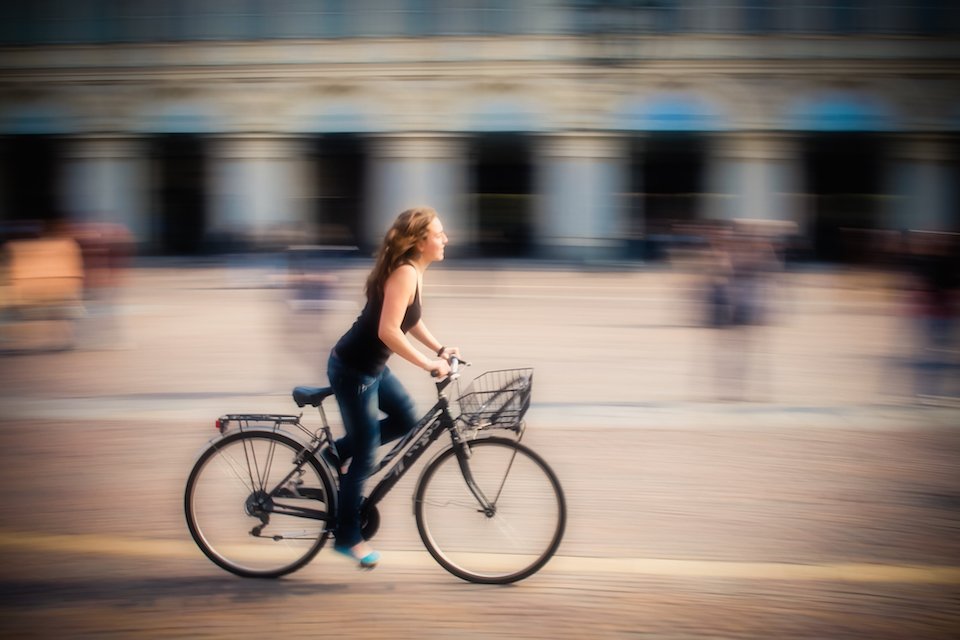Jul 3, 2024
How to Master the Art of Panning in Photography?
Panning in photography is an essential technique that allows you to capture the dynamic movement of a subject while keeping it in sharp focus against a blurred background. This technique not only adds a sense of motion and speed to your images but also enhances the visual impact of your photographs. Whether you’re photographing sports events, wildlife, or everyday street scenes, mastering the art of panning can elevate your photography skills to the next level. Let’s dive into the steps and tips to help you master panning in photography.

Understanding the Basics
Before you start practising panning in photography, it’s important to understand the basic principles. Panning involves tracking a moving subject with your camera while using a slower shutter speed. This combination keeps the subject in focus while the background becomes a blur of motion. The key to successful panning is synchronizing your camera’s movement with the speed of your subject.
Setting Up Your Camera
Choosing the right settings on your camera is crucial for effective panning in photography. Start by switching your camera to Shutter Priority mode (Tv or S mode) which allows you to control the shutter speed while the camera adjusts the aperture accordingly. A good starting point for shutter speed is around 1/30th to 1/60th of a second, but this can vary depending on the speed of your subject.
Choosing the Right Lens
The lens you use can significantly impact your success with panning in photography. A telephoto lens is often preferred because it allows you to maintain a comfortable distance from your subject while still filling the frame. Lenses with image stabilization (IS) or vibration reduction (VR) can also help reduce camera shake, making it easier to achieve sharp results.
Finding Your Subject
Selecting the right subject is another critical factor for mastering panning in photography. Look for subjects that move at a consistent speed, such as cyclists, runners, or cars. Predictable movement allows you to practice your panning technique without sudden changes in direction or speed.
Positioning Yourself
Your position relative to the moving subject can greatly influence your success with panning in photography. Stand parallel to the path of your subject to minimize changes in distance and movement direction. This position will help you maintain a smooth and steady panning motion.
Practicing the Motion
Panning in photography requires smooth and fluid camera movement. Begin by locking your elbows into your sides and using your torso to swivel as you track your subject. Keep your movements as smooth as possible, and avoid jerky or abrupt motions. It’s helpful to practice the motion without taking photos to get a feel for the rhythm and timing.
Focusing Techniques
Achieving a sharp focus on your subject is crucial for effective panning in photography. Switch your camera to continuous autofocus mode (AF-C or AI Servo) to allow the camera to adjust focus as the subject moves. Pre-focus on a point where you anticipate the subject will pass, then track the subject through your viewfinder and press the shutter button while maintaining a steady panning motion.
Timing Your Shot
Timing is everything in planning in photography. As you track your subject, press the shutter button smoothly and steadily. It’s often helpful to use burst mode, which allows you to capture a series of shots in quick succession. This increases your chances of getting a perfectly timed shot with the desired motion blur.
Experimenting with Shutter Speeds
Experimenting with different shutter speeds is essential for mastering panning in photography. Slower shutter speeds create more pronounced motion blur, while faster speeds can freeze the action too much. Adjust your shutter speed based on the speed of your subject and the desired effect. Remember, practice and experimentation are key to finding the right balance.
Reviewing and Adjusting
After each panning session, review your shots to see what worked and what didn’t. Pay attention to the sharpness of your subject and the quality of the motion blur in the background. Adjust your technique, camera settings, and positioning based on your observations. Over time, you’ll develop a better understanding of how to achieve the perfect panning shot.
Conclusion
Mastering the art of panning in photography takes practice, patience, and persistence. By understanding the basics, setting up your camera correctly, choosing the right subjects and lenses, and refining your technique, you’ll be well on your way to capturing stunning images that convey a sense of motion and energy. Remember, the key to success is practice. Keep experimenting, learning from your shots, and refining your skills. With dedication and effort, you’ll master panning in photography and add a powerful technique to your photographic repertoire.
More Details